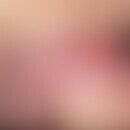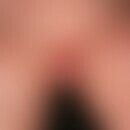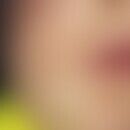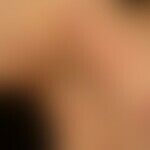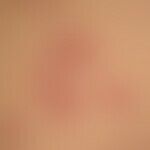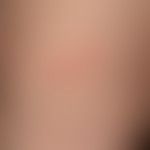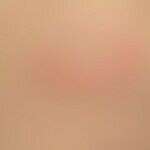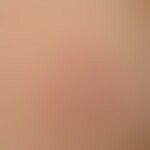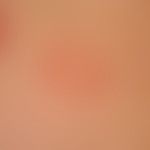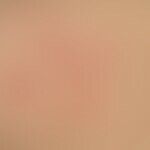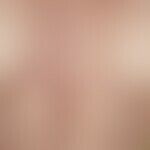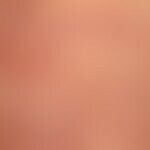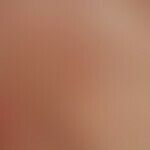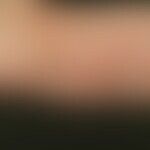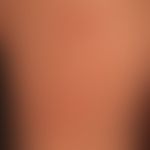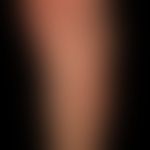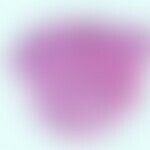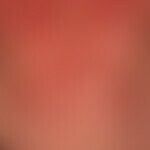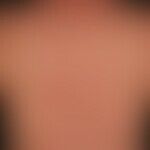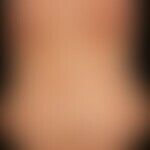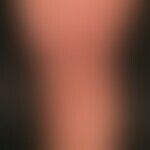Synonym(s)
HistoryThis section has been translated automatically.
Colcott-Fox 1881; Darier 1916
DefinitionThis section has been translated automatically.
Chronic, recurrent, polyetiologic, inflammatory skin disease that has its clinical significance as a "réaction cutanée" or "indicator" dermatosis. It is characterized by centrifugally growing, ring-shaped, more rarely also arc-shaped or garland-shaped, red, "palpable" rough plaques that feel like a wet cord. The entity of the clinical picture is controversial, especially as the views on this clinical picture have changed several times since the first description by Darier.
Jean Darier originally described the disease as a "self-limited, etiologically unexplained dermatosis, as "érythème papulo-circinée migrateur et chronique" or "L'érythème annulaire centrifuge", with ring-shaped, rapidly spreading foci that regress spontaneously after 1-2 weeks. Later literature described inconsistent, mostly reactive clinical pictures with and without scaling, partly urticarial, partly "eczematous", partly vesicular. The histological patterns are also described differently with superficial, but also deep lymphocytic (possibly eosinophilic, but not neutrophilic) infiltrates.
You might also be interested in
ClassificationThis section has been translated automatically.
From both a clinical and histological point of view,:
- superficial type
- and
- profound type.
Note: It is doubtful whether the profound type represents an independent entity. It is more likely that variants of other clinical pictures were described under this term (e.g. lupus erythematosus tumidus or pseudolymphomas). The descriptive term "deep gyrated erythema" chosen by some authors for the profound type is also not very helpful for its etiopathological classification.
EtiopathogenesisThis section has been translated automatically.
Ultimately, the etiopathogenesis of erythema anulare centrifugum is unclear.
The association with:
- Malignant underlying diseases (lymphomas, leukemias - especially chronic lymphatic leukemia -, breast carcinoma, ovarian carcinoma, bronchial carcinoma). The acronym"PEACE = paraneoplastic erythema anulare centrifugum" was coined for the paraneoplastic form of EAC, which sounds catchy but says little (Chodkiewicz HM et al. 2012).
- Infections (in particular candidiasis of the gastrointestinal tract, borrelia, HIV, COVID-19, zoster). The occurrence of EAC has also been observed after COVID-19 vaccination (Kim JC et al. 2022).
- Parasitoses (ascarids or other worm diseases)
- Autoimmune diseases (autoimmune hepatitis, polyglandular autoimmune syndrome, Hashimoto's thyroiditis, Crohn's disease; sarcoidosis, polychondritis, lupus erythematosus).
- Medications (including amitriptyline, salicylates, finasteride, chloroquine, penicillin, diuretics, cimetidine)
- Food allergens(tomatoes, fish proteins, peanuts, molds contained in cheese).
ManifestationThis section has been translated automatically.
On average, patients fall ill in middle age (50-55 years of age). Occurs less frequently in adolescents or children (see Fig.). Women are slightly more frequently affected (f:m = 5:4).
LocalizationThis section has been translated automatically.
The main areas affected are the trunk (50-60%), proximal limbs and gluteal region. The face, palms and soles of the feet remain free, as do the mucous membranes.
ClinicThis section has been translated automatically.
Multiple, initially homogeneous 1.0-2.0 cm red plaques that heal centrally and expand centrifugally. The centrifugal growth of the plaques is a few millimeters per day. This results in ring formations with a diameter of up to 6.0 cm within a few weeks. Typically, the plaques are smooth on the surface. In some cases, a fine lamellar ruff of scales can be found on the inner edge of the ring (as the scaling lags behind for several days as a result of the inflammation).
The palpation findings are almost pathognomonic: when palpating the skin from the center to the periphery of a focus, the peripheral wall feels like a "wet wool thread" under the skin.
Furthermore, scaly - eczema-like, vesicular or teleangiectatic-purpuric, or pseudolymphoma-like variants are described.
The profound type lacks any epidermal involvement. The surface is then smooth and free of scales. A distinction must be made here between lupus erythematosus tumidus and pseudolymphomas.
HistologyThis section has been translated automatically.
A superficial type is distinguished from a profound type, and it is increasingly considered that these are 2 distinct entities.
- The superficial type shows a superficial perivascular and interstitial lymphocyte infiltrate with eosinophilic leukocytes in 1/3 of the cases , occasionally also neutrophilic granulocytes. Histoeosinophilia may also dominate the histological picture, and erythrocyte extravasations may be found in isolated cases. Exocytosis with focal spongiosis and parakeratosis is regularly detectable. Intraepidermal blistering is rare.
- The profound type shows dense, usually strictly perivascular infiltrative pods of lymphocytes in the mid and/or deep dermis; eosinophilic leukocytes in varying admixture in 1/3 of cases. The epithelium shows occasional vacuolar degeneration and dyskeratosis. Not infrequently, melanophages are encountered in the upper dermis. Spongiosis and parakeratosis are completely absent in this type. There are some authors who classify the profound type as an independent (deep figurate erythema) clinical picture.
DiagnosisThis section has been translated automatically.
Typical clinical picture with annular or figured plaques. Histology may be indicative.
Differential diagnosisThis section has been translated automatically.
- Clinical Differential Diagnoses:
- Dermatitis herpetiformis: this differential diagnosis should be considered in cases of marginal vesicle formation. In these cases, histological or imunhistological clarification is recommended.
- Tinea corporis: pruritic, marginal plaques; if not pre-treated marked scaling, palpatory no marked marginal induration. Clinical and histological evidence of the pathogen (e.g. PAS stain).
- Annular urticaria: Large migratory velocity of urticae (changes in localization are detectable by pen marking and exclusion criterion for erythema anulare centrifugum); prominent to severe pruritus; bright red color. Histology excludes erythema anulare centrifugum.
- Nummular dermatitis: Eczematized pruritic plaques without prominent margins; usually disseminated. Most chronic course, no volatility.
- Seborrheic dermatitis: Difficult differential diagnosis with marginalized plaques! Typical for this diagnosis is chronic course of the disease with intensification in the winter months and possibly complete healing under summer, maritime climate.
- Pityriasis rosea: It can be assumed that a part of the so-called spongiotic type of Eac belongs to this clinical picture. Pityriasis rosea does not tend to anular configuration. Distribution pattern below analogous (truncal). Erythema anulare centrifugum is not cleavage line-betent.
- Erythema anulare-like psoriasis: Typical (anular) plaque psoriasis is a very important DD. Like erythema anulare centrifugum, anular-configuirated, but always evidence of pustules (The Eac shows no pustularations; exclusion criterion); usually psoriasis history! Histology is diagnostic.
- Parapsoriasis en plaques: No marginal accentuation, usually no scaling, pseudoatrophy! No itching!
- Mycosis fungoides (esp. type pagetoid reticulosis): No marginal accentuation; very slow growth over months or years! Little or no itching; histology is diagnostic!
- Erythema gyratum repens (extremely rare!): Anular, garland-shaped or spirally intertwined (atypical of erythema anulare centrifugum), nonpruritic, slightly indurated plaques. Rapid change of foci.
- Erythema exsudativum multiforme: Initially high rate of progression (hours and days); argues against erythema anulare centrifugum; shooting target configuration (absolutely atypical of erythema anulare centrifugum); frequent involvement of mucous membranes (exclusion criterion for erythema anulare centrifugum).
- Bullous pemphigoid: Initially high rate of progression (hours and days); argues against Eac; usually prominent pruritus; laboratory (pemphigoid antibodies), histology and immunohistology are conclusive.
- Granuloma anulare: color red-brown, plaques usually polyclic bordered (atypical for erythema anulare centrifugum), never scaling, histology proving.
- Eosinophilic cellulitis (rare): Stage-dependent variability of clinical presentation (erythema anulare centrifugum is morphologically stable).
- Lupus erythematosus tumidus: Solid, homogeneous plaques, no anular structures, never scaling. DD less necessary from a clinical than from a histological point of view!
- Erythema migrans (history, usually only single foci, serology...).
- Histological differential diagnoses (often difficult and can only be made in connection with the clinical picture. Good clinical information is important!):
- Acute and subacute eczema: spongiosis, planar parakeratosis. No strict perivascular accentuation.
- Urticaria (acute or chronic): Only sparse (never prominent) perivascularly oriented, mixed-cell infiltrate of eosinophils, neutrophils, and few lymphocytes. No epidermotropy; occasionally few perivascular erythrocytes.
- Pityriasis rosea: Although clinically distinct, the histopathologic changes show extensive indentity. Differentiation only in connection with clinical picture!
- Lupus erythematosus tumidus: Superficial and deep lymphocyte infiltrate, also in the vascular walls. No epidermal changes (also absent in the profound type of erythema anulare centrifugum). Usually no prominent eosinophilia! Histologically, profound type of erythema anulare centrifugum and lupus erythemaodes tumidus often cannot be differentiated with certainty, but clinically they almost always can!
- Borrelia-associated pseudolymphoma: Superficial and deep lymphocytic infiltrates, often with characteristic admixture of plasma cells. Possible arragenments of lymphoid follicles. no eosinophilia.
- Psoriasis vulgaris: Mostly prominent acanthosis, extensive hyper- and parakeratosis with neutrophil inclusions. No eosinophilia!
- Parapsoriasis en plaques: Fibrosis of the stratum papillare; rather atrophic surface epithelium; the perivascular accentuation of the infiltrate typical of erythema anulare centrifugum is absent.
- Early syphilis: interface dermatitis with psoriasiform epidermal reaction. Dense, band-like infiltrate in the upper and middle dermis of lymphocytes, histiocytes, and plasma cells). Extension of the infiltrate to the deep vascular plexus.
General therapyThis section has been translated automatically.
Focus search and remediation with elimination of gastric and intestinal disorders (including intestinal candidiasis, worm infections), foci on tonsils, teeth, gallbladder and adnexa.
Thorough examination for a visceral neoplasm (breast, larynx, lung, pancreas, ovary; see also paraneoplasia, cutaneous) and exclusion of myeloid or lymphatic neoplasms.
Potentially triggering medication (see above) should be discontinued. Furthermore, a corresponding food restriction is recommended if this is suspected.
External therapyThis section has been translated automatically.
Internal therapyThis section has been translated automatically.
Systemic glucocorticoids are only effective in higher doses; recurrences are to be expected after their discontinuation.
Progression/forecastThis section has been translated automatically.
Typical, however, is a long-lasting, possibly years-long relapse activity. Overall, the duration of the disease varies from months to years. In the vast majority of cases, however, final healing occurs after 9-12 months.
A (not entirely) rare (infection-allergic?) variant is the "recurrent EAC" with seasonal courses that last for years. Occurrence in the summer months and spontaneous healing in the cold season is frequently observed (Haiges 2016; Mandel VD et al. 2015; Monteagudo B et al. 2022).
Case report(s)This section has been translated automatically.
Case report 1: The 65-year-old female patient noticed for about 3 weeks, first on the neck, later on the décolleté and the upper extremities, initially disc-shaped, slightly itchy, red plaques, which enlarged centrifugally and flaked off centrally, so that anular and, by confluence, also polycyclic formations developed. Parchment-like scaling was detectable at the edges. The medical history was not very informative (no previous infections, no new medication taken in the last 3 months, no known tumor diseases). Significant nicotine abuse.
Laboratory: Orienting laboratory o.p.B.
Histology: superficial perivascular and interstitial lymphocyte infiltrate with eosinophilic leukocytes; occasionally also neutrophilic granulocytes and erythrocyte extravasations. Focal exocytosis with spongiosis and parakeratosis.
Further examination findings: conspicuous CT chest findings with a suspicious mass in the left lung lobe.
Ther: The patient strictly refused further therapeutic measures.
____________________________________________
Case 2: A 46-year-old Caucasian woman suffered from recurrent, self-healing ring-shaped eruptions on the extremities, which had recurred every year for the last 12 years. Physical examination revealed multiple erythematous and purple annular plaques on both legs and arms. The eruptions began as small, markedly itchy, scaly, erythematous papules that developed into annular plaques with central paling and centrifugal spread. The face, hands, feet, trunk and mucous membranes were spared. The lesions appeared every year in the summer months and regressed spontaneously in the fall. The rest of the physical examination revealed no abnormalities. Medical history: The medical history was unremarkable; negative drug screening. Laboratory: Routine laboratory tests, including immunologic tests (immunoglobulins, rheumatoid factor, antinuclear factor and organ-specific antibodies) were within normal limits. Borrelia burgdorferi antibodies and viral serologic tests were negative. Mycological examinations were negative. Other findings: A gynecological screening was normal. Breast X-ray and mammography were normal. Skin biopsy revealed a moderately intense superficial perivascular dermal lymphohistiocytic infiltrate with few eosinophils, focal epidermal spongiosis. DIF: negative.
Case 3:A 37-year-old otherwise healthy woman presented with a 1-week history of pruritic skin lesions on the arms and back. She reported fever, headache and malaise 2 weeks prior to the appearance of these lesions. A nasopharyngeal reverse transcription-polymerase chain reaction (RT-PCR) was positive for SARS-CoV-2 at this time. Physical examination revealed multiple erythematous papules and annular plaques with central clearing and fine scaling at the inner margin on the upper arms and back. Histopathology revealed a marked perivascular lymphocytic infiltrate in the papillary dermis and occasionally in the reticular dermis, with endothelial tumescence, hematopoietic extravasation, and sparse interstitial eosinophils. The clinicopathologic findings were consistent with EAC. Routine laboratory testing revealed no changes. Treatment with clobetasol propionate 0.05% cream was applied once daily for 2 weeks. This caused the lesions to disappear completely (Setó-Torrent N et al. 2022).
LiteratureThis section has been translated automatically.
- Batycka-Baran A et al. (2015) Erythema annulare centrifugum associated with ovarian cancer. Acta Derm Venereol 95:1032-1033
- Bottoni U (2002) Erythema annulare centrifugum: report of a case with neonatal onset. J Eur Acad Dermatol Venereol 16: 500-503
- Chander R et al. (2014) Systemic lupus erythematosus presenting as erythema annulare centrifugum. Lupus 23:1197-2000.
- Chodkiewicz HM et al.(2012) Paraneoplastic erythema annulare centrifugumeruption: PEACE. Am J Clin Dermatol 13:239-246.
- Darier (1916) De l'érythème annulaire centrifuge (érythème papulo-circineé migrateuse et chronique) et de quelques éruptions analogues. Annales de dermatologie et de syphilographie (Paris) 5: 57-58
- Fernandez-Nieto D et al. (2021) Erythema annulare centrifugum associated with chronic amitriptyline intake. An Bras Dermatol 96:114-116.
- Gniadecki R (2002) Calcipotriol for erythema annulare centrifugum. Br J Dermatol 146: 317-319
- Haiges D et al. (2016) Recurrent or exacerbating erythema anuare centrifugum in the summer months. Skin 16: 12-14
- Halevy S (2002) Autoimmune progesterone dermatitis manifested as erythema annulare centrifugum: Confirmation of progesterone sensitivity by in vitro interferon-gamma release. J Am Acad Dermatol 47: 311-313
- Ilkit M et al.(2012)Cutaneous id reactions: a comprehensive review of clinical manifestations, epidemiology, etiology, and management. Crit Rev Microbiol 38:191-202.
- Imafuku K et al. (2015) Erythema annulare centrifugum-like mycosis fungoides after unrelated bone marrow transplantation. Br J Haematol 170:140
Kim JC et al. (2022) Erythema annulare centrifugum induced by COVID-19 vaccination. Clin Exp Dermatol 47:591-592.
- Mandel VD et al. (2015) Annually recurrent erythema annulare centrifugum: a case report. J Med Case Rep 9:236.
- Meloche L et al. (2022) Erythema annulare centrifugum in a child. CMAJ 194: E1690.
- Monteagudo B et al. (2022) Annually Recurring Erythema Annulare Centrifugum: A Case Report and Review of the Literature. Actas Dermosifiliogr 113:835-837.
- Ohmori S et al. (2012) Erythema annulare centrifugum associated with herpes zoster. J UOEH 34:225-229.
- Setó-Torrent N et al. (2022) Erythema annulare centrifugum triggered by SARS-CoV-2 infection. J Eur Acad Dermatol Venereol 36:e4-e6.
- Vocks E (2003) Erythema annulare centrifugum-type psoriasis: a particular variant of acute-eruptive psoriasis. J Eur Acad Dermatol Venereol 17: 446-448
- Yaniv R et al. (1993) Erythema annulare centrifugum as the presenting sign of Hodgkin's disease. Int J Dermatol 32: 59-61
- Weyers, W et al (2003) Erythema annulare centrifugum. Am J Dermatopathol 25: 451-462
- Ziemer M et al (2010) Erythema anulare centrifugum. Dermatologist 61: 967-972
Incoming links (22)
Annular dermatoses; Annular erythema of infancy ; Chronic lymphocytic leukemia; Darier, ferdinand jean; Eosinophilic cellulitis ; Erythema; Erythema annulare centrifugum; Erythema annulare centrifugum; Erythema elevatum diutinum; Erythema gyratum perstans; ... Show allOutgoing links (30)
Autoimmune diseases; Bullous Pemphigoid ; Candidoses; Chloroquine; Crohn disease, skin alterations; Dermatitis herpetiformis; Early syphilis; Eczema (overview); Eosinophilic cellulitis ; Erythema gyratum repens; ... Show allDisclaimer
Please ask your physician for a reliable diagnosis. This website is only meant as a reference.
